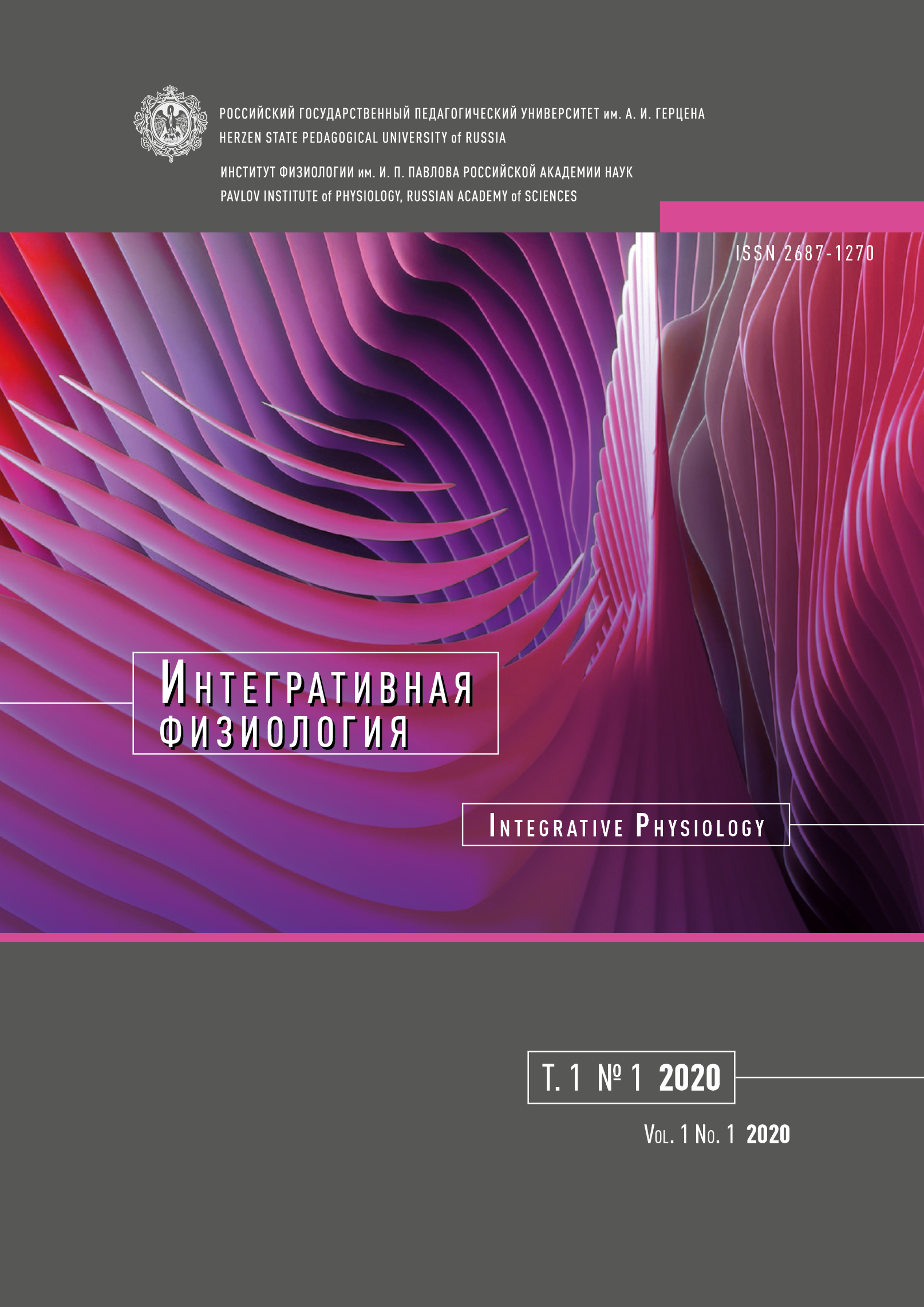Effects of ketamine and stress on the neurotrophin receptors expression
DOI:
https://doi.org/10.33910/2687-1270-2020-1-1-75-77Ключевые слова:
ketamine, neurotrophin, SorCS1, SorCS3, BDNF, p75Аннотация
Effects of a subanesthetic dose of ketamine and acute stress on the major (p75, Trkb, Trkc) and novel (Sorcs1, Sorcs2, Sorcs3) neurotrophin receptors and Bdnf gene expression in rats were examined. Adult male Wistar rats were treated with ketamine (15 mg/kg) or saline and half of each group was subjected to tail suspension test for 6 minutes, which was interpreted as an acute mild stressor. After an hour the total RNA was isolated from prefrontal cortex, midbrain and brainstem regions of each animal and mRNA expressions were analysed by real-time RT-PCR. The results showed different significant interactions between factors which were strongly dependent on the structure of the brain. Both subanesthetic doses of ketamine and acute mild stress caused changes in neurotrophin receptors and Bdnf gene expression in examined brain areas associated with depression. The obtained results allow to surmise that BDNF, SORCS1, SORCS3 and p75 receptors are involved in the ketamine-induced neuroplasticity and antidepressant activity.
Библиографические ссылки
Christiansen, G., Andersen, K., Riis, S. et al. (2017) The sorting receptor SorCS3 is a stronger regulator of glutamate receptor functions compared to GABAergic mechanisms in the hippocampus. Hippocampus, vol. 27, no. 3, pp. 235–248. PMID: 27935149. DOI: 10.1002/hipo.22689 (In English)
Glerup, S., Bolcho, U., Molgaard, S. et al. (2016) SorCS2 is required for BDNF-dependent plasticity in the hippocampus. Molecular Psychiatry, vol. 21, no. 12, pp. 1740–1751. PMID: 27457814. DOI: 10.1038/mp.2016.108 (In English)
Kavalali, E., Monteggia, L. (2015) How does ketamine elicit a rapid antidepressant response? Current Opinion in Pharmacology, vol. 20, pp. 35–39. PMID: 25462290. DOI: 10.1016/j.coph.2014.11.005 (In English)
Lanshakov, D. A., Sukhareva, E. V., Kalinina, T. S., Dygalo, N. N. (2016) Dexamethasone-induced acute excitotoxic cell death in the developing brain. Neurobiology of Disease, vol. 91, pp. 1–9. PMID: 26873551. DOI: 10.1016/j.nbd.2016.02.009 (In English)
Monyer, H., Burnashev, N., Laurie, D. et al. (1994) Developmental and regional expression in the rat brain and functional properties of four NMDA receptors. Neuron, vol. 12, no. 3, pp. 529–540. PMID: 7512349. DOI: 10.1016/0896-6273(94)90210-0 (In English)
Pałucha-Poniewiera, A., Podkowa, K., Pilc, A. (2019) Role of AMPA receptor stimulation and TrkB signaling in the antidepressant-like effect of ketamine co-administered with a group II mGlu receptor antagonist, LY341495, in the forced swim test in rats. Behavioural Pharmacology, vol. 30, no. 6, pp. 471–477. DOI: 10.1097/FBP.0000000000000471 (In English)
Savas, J. N., Ribeiro, L. F., Wierda, K. D. et al. (2015) The sorting receptor SorCS1 regulates trafficking of neurexin and AMPA receptors. Neuron, vol. 87, no. 4, pp. 764–780. PMID: 26291160. DOI: 10.1016/j.neuron.2015.08.007 (In English)
Shishkina, G. T., Kalinina, T. S., Bulygina, V. V. et al. (2015) Anti-apoptotic protein Bcl-xL expression in the midbrain raphe region is sensitive to stress and glucocorticoids. PLOS ONE, vol. 10, no. 12, article e0143978. PMID: 26624017. DOI: 10.1371/journal.pone.0143978 (In English)
Subkhangulova, A., Malik, A. R., Hermey, G. et al. (2018) SORCS1 and SORCS3 control energy balance and orexigenic peptide production. EMBO Reports, vol. 19, no. 4, article e44810. PMID: 29440124. DOI: 10.15252/embr.201744810 (In English)
Yu, X.-M., Fang, X.-Q., Jiang, X.-H. (2016) NMDA receptor internalization down-regulates NMDA receptormediated synaptic responses through the inhibition of remaining (non-internalized) surface NMDA receptors. Neurotransmitter, vol. 3, article e1192. (In English)
Опубликован
Выпуск
Раздел
Лицензия
Copyright (c) 2020 Елизавета Владимировна Шабурова, Дмитрий Александрович Ланшаков

Это произведение доступно по лицензии Creative Commons «Attribution-NonCommercial» («Атрибуция — Некоммерческое использование») 4.0 Всемирная.
Авторы предоставляют материалы на условиях публичной оферты и лицензии CC BY 4.0. Эта лицензия позволяет неограниченному кругу лиц копировать и распространять материал на любом носителе и в любом формате в любых целях, делать ремиксы, видоизменять, и создавать новое, опираясь на этот материал в любых целях, включая коммерческие.
Данная лицензия сохраняет за автором права на статью, но разрешает другим свободно распространять, использовать и адаптировать работу при обязательном условии указания авторства. Пользователи должны предоставить корректную ссылку на оригинальную публикацию в нашем журнале, указать имена авторов и отметить факт внесения изменений (если таковые были).
Авторские права сохраняются за авторами. Лицензия CC BY 4.0 не передает права третьим лицам, а лишь предоставляет пользователям заранее данное разрешение на использование при соблюдении условия атрибуции. Любое использование будет происходить на условиях этой лицензии. Право на номер журнала как составное произведение принадлежит издателю.







